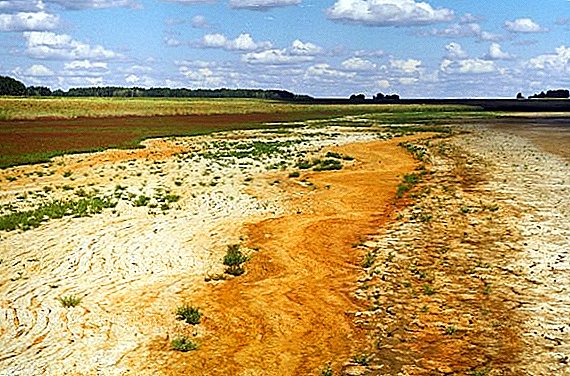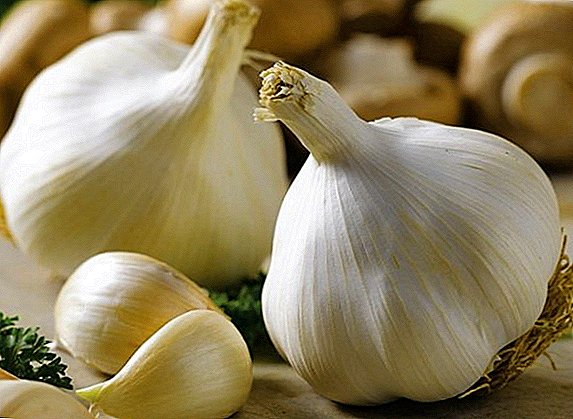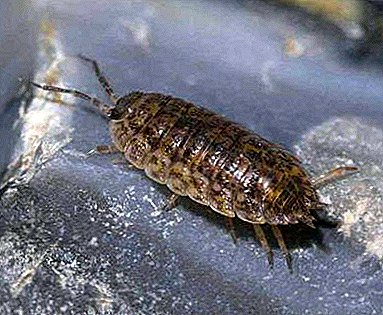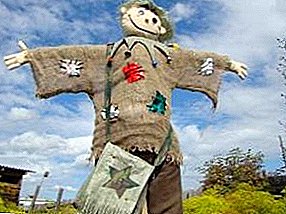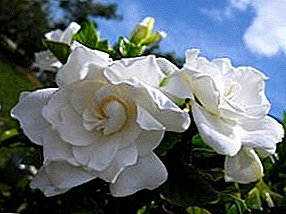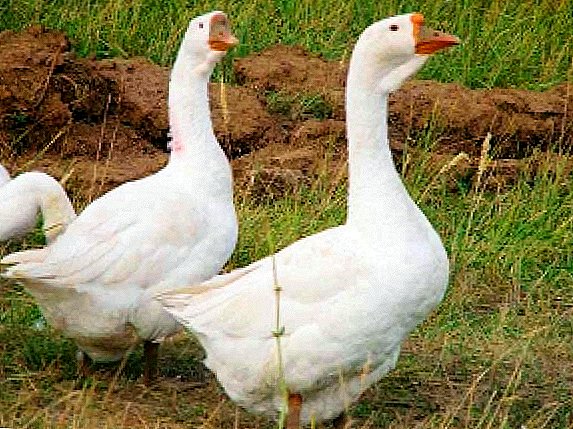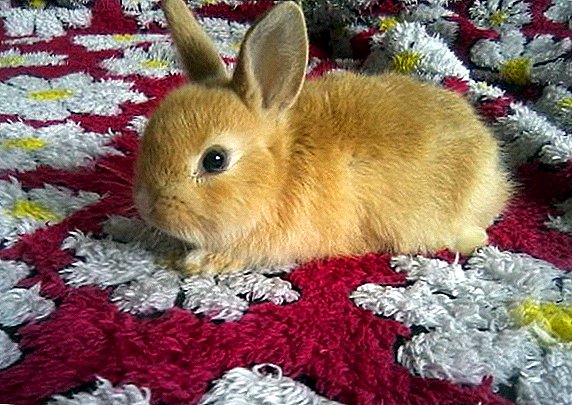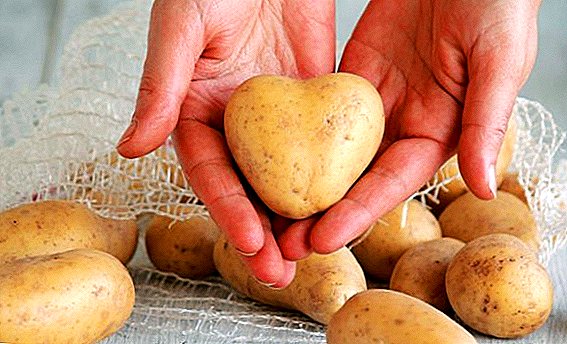 At the moment, the breeders of many countries of the world bred a huge number of breeds of cattle that have high milk and meat qualities. Many of them are valued for marble meat or for a quick weight gain, but today we will look at a breed that does not require you to pay a lot of upfront costs for young. Next, learn the characteristics and description of the black-motley breed. Tell you about the requirements for food supply and conditions.
At the moment, the breeders of many countries of the world bred a huge number of breeds of cattle that have high milk and meat qualities. Many of them are valued for marble meat or for a quick weight gain, but today we will look at a breed that does not require you to pay a lot of upfront costs for young. Next, learn the characteristics and description of the black-motley breed. Tell you about the requirements for food supply and conditions.
Breed history and description
Briefly outline the characteristics of the breed, as well as the productive qualities, on the basis of which strengths and weaknesses will be formulated. 
Origin
This is a Soviet breed of dairy, which was bred in the 30s-40s of the last century. Selection work was carried out with local representatives of the cattle and Dutch bulls. Work on the breed was completed in 1959, after which the animals began to be massively used on collective farms.
Did you know? Despite the fact that in India it is forbidden to kill cows and eat cattle meat, this country came out on top in the world in beef exports, overtaking Brazil. India annually supplies about 1.89 million tons of products to the world market.
Appearance and physique
The main parameters of black and motley breed:
- weight of adults - 550-650 / 900-1000 kg;
- height at withers - 130 cm;
- slanting body length - 160 cm;
- chest depth - 72 cm;
- color - black and white.
 Body constitution:
Body constitution:
- head - long with an elongated muzzle;
- horns - short, gray;
- neck is of medium length, skin folds are present;
- chest - medium width;
- back - straight with straight waist;
- sacrum - wide;
- legs - smooth, strong enough;
- udder - volumetric, bowl-shaped.
Read also about the Ayrshire breed of dairy cows.
Meat and milk production
Breeding work was aimed at the volume and fat content of milk, but the quality of meat is also worth attention. Worth noting that there is Ural and Siberian varieties, which were created on the basis of existing cattle. They have different productivity.  Black-motley breed productivity:
Black-motley breed productivity:
- the volume of milk of the Ural type - 3.7-3.8 thousand kg per year;
- Ural type milk fat - 3.8-4%;
- Siberian type milk volumes - 3.5–5 thousand kg per year;
- fat content of Siberian type milk - 3.7-3.9%;
- protein content in milk - 3.1-3.3%;
- slaughter yield - 55-60%;
- meat quality is satisfactory, low fat content;
- daily weight gain of young stock - 0.6-0.8 kg, with good nutrition can reach 1 kg;
- earliness is high, at the age of 15 months the weight is more than 420 kg.
Important! With a standard diet, the average annual yield is 2.5-3 thousand kg. Productivity depends on the quality and variety of feed.
Advantages and disadvantages
Pros:
- acclimatize quickly;
- have good health;
- good productivity;
- quick weight gain;
- high milk fat levels;
- availability and relatively low purchase price of young animals.
 Minuses:
Minuses:
- high requirements for conditions of detention;
- meat quality is lower than in many European cattle breeds.
Maintenance and care
Consider the features and rules of home maintenance of the black-motley breed of cows, which will allow to get large volumes of milk, as well as prevent the development of diseases.
Learn how to build a barn and a stall for a cow.
Summer playground
The summer playground is necessary so that during the warm season the cattle can graze and rest in the fresh air. This ensures the supply of vitamin D, as well as good ventilation of the lungs in animals. The maintenance in the open air allows not only to increase the volume of milk yields, but also to reduce maintenance costs. This is due to the fact that you do not need to spend electricity for lighting and ventilation of the room. Also reduced feed costs due to grazing.
If the livestock has several dozens or hundreds of individuals, then the summer platform must be equipped with a milking station and a soft-coated canopy, where the animals can rest after milking or during a strong sun season. 
Arrangement of premises
The basic requirements for arranging barn are as follows:
- floor area. The stable containing a cow must have a floor area of at least 20 square meters. m, so that the animal does not experience discomfort during rest or feeding. When farming large livestock, the same standards apply as for other dairy breeds with similar body dimensions;
Important! Doors and windows in the room should go to the south or east side.
- feeding trough. Use wooden or plastic feeders, the volume of which is equal to one portion of hay for each individual. If there is more than one individual in a single barn, then it is necessary to install several feeders or divide it into several sections;
- drinking bowl. A metal barrel of the required volume without sharp edges is used as a trough. The material of the drinker should not spoil the water, as well as rust;
- litter. Straw is commonly used as it is cheap and does not absorb moisture.

Conditions of detention
When caring for livestock should consider these points:
- room temperature. In the warm season it is necessary that the temperature in the barn does not exceed +25 ° C. In winter, the optimum temperature is + 5 ... +12 ° С. Representatives of the breed are well acclimatized, so they quickly get used to the new conditions. They can tolerate freezing temperatures, as well as intense heat, but only for a short time. Very high and extremely low air temperatures adversely affect the yield and increase in live weight;
- ventilation and drafts. Animals do not tolerate drafts well, so all the gaps in the room must be repaired, and doors and windows must be removed in such a way that strong air currents do not occur during the heat. Additionally mounted ventilation so that the exchange of air did not cause a sharp decrease in temperature;
- lighting. Duration of daylight should be 16 hours. The light must be turned on at 4 am and turned off at 8 pm. Lighting should be uneven. At the resting place, the light must be muffled, and near the trough and the feeder - strengthened. To prevent injury to animals, at night include red lamps with a capacity of 10 watts.
Important! Proper lighting has a positive effect on the yield.
Regular cleaning of the stall and inventory
The litter is replaced daily with a fresh one; at the same time, manure and feed residues are removed. The stable must always be clean in order to exclude the "colonization" of parasites, as well as the emergence of a favorable environment for the development of microbes.  Drinking bowls and feeders clean as polluted. If wet food is used, then cleaning is more frequent. On the walls of the drinking barrel there should be no dirt, any vegetation or algae. Inventory is cleaned as it is contaminated, but without fail during general disinfection.
Drinking bowls and feeders clean as polluted. If wet food is used, then cleaning is more frequent. On the walls of the drinking barrel there should be no dirt, any vegetation or algae. Inventory is cleaned as it is contaminated, but without fail during general disinfection.
Full disinfection is carried out either once a month or every 2 weeks if the animal is infected. For disinfection used chemical solutions that can cause poisoning in humans and cows, so for the duration of the procedure, the animals are removed from the barn. Personnel are required to use protective equipment (gloves, respirator, goggles, apron).
Check out the most interesting facts about cows.
Feeding ration
Not only the appearance of the animal, but also the daily weight gain, the volume of milk, as well as resistance to diseases depend on the correctly made menu. 
Summer grazing on pasture
In the warm season, you can significantly save on feeding through grazing, as well as harvesting valuable herbs. At the same time, it is necessary to give additional feeding to the animals in order to achieve an optimal increase in live weight, as well as to provide dairy cows with the necessary number of calories.
Important! For every 100 kg of weight should be 1 feed unit. 1 room unit equal to 1414 kcal.
Late spring and summer give the following herbs:
- clover;
- alfalfa;
- green peas or beans.
Cows are offered a balancing feed that evens out the amount of protein entering the body throughout the day, namely:
- factory feed for dairy breeds;
- barley;
- wheat;
- oats;
- rapeseed meal;
- soybean meal.

Differences in winter feeding
In winter, the main food is high-quality hay in the required animal volumes. For every 100 kg of body weight, you need to give about 3.5 kg of hay. That is, an animal with a mass of 600 kg should eat at least 21 kg of hay per day. In addition, the menu includes juicy food to provide large amounts of milk.
Cows are given the following foods:
- potatoes;
- corn silage;
- fodder beet;
- carrot;
- rutabaga;
- sugar beet.
The required amount of juicy feed is calculated according to the following scheme: to get 1 kg of milk, a cow needs to feed 2-3 kg of juicy feed. Also, for each liter of products should be 100-200 g of concentrated feed (bran or cake).
The vitamins and minerals of animals are obtained from succulent feeds, but in winter it does not hurt to include a vitamin and mineral supplement. Also, cows are offered daily 5-8 g of salt for every 100 kg of weight. It is better to give in the form of lizun.
Did you know? Cows have a well-developed ear, so that they can be accustomed to perform certain actions, playing the same melody.
Video: black-and-white breed of cows
The black-and-white breed of cows is a good choice for both a large farm and a small backyard. Animals have good productive qualities, do not require expensive feed, quickly become accustomed to the climate and do not differ in aggressiveness towards the owners.


